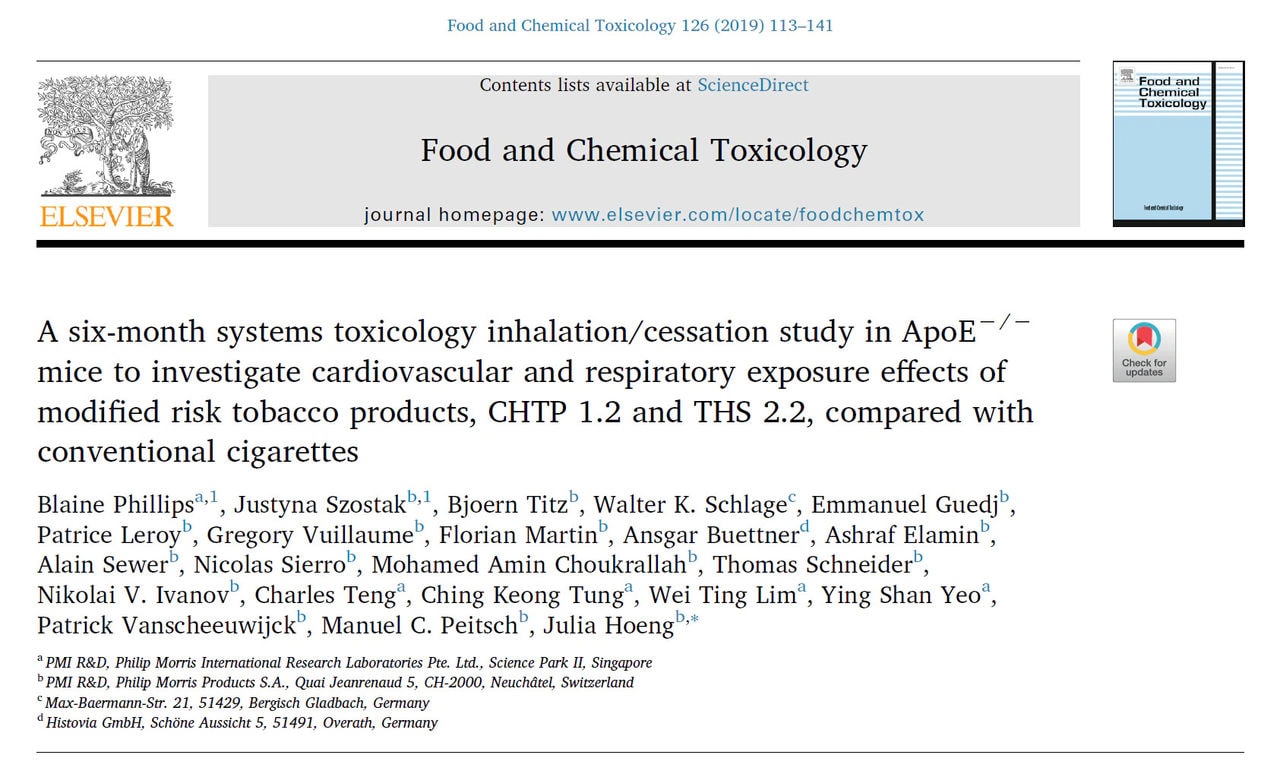Heated tobacco vs cigarettes: Effects on blood vessels and airway
Smoking-related diseases: what are atherosclerosis and emphysema?
Quitting smoking altogether is the best way for an adult smoker to minimize his or her risk of developing smoking-related diseases like atherosclerosis and emphysema. Atherosclerosis is the build-up of fats and cholesterol in the walls of arteries and is the major cause of cardiovascular disease (CVD). It can lead to high blood pressure and blood clots, and even heart attack and stroke. Emphysema, a form of chronic obstructive pulmonary disease (COPD), is a lung condition that causes breathing difficulty. It is caused by damage to the alveoli—small air sacs—in the lungs. As emphysema doesn’t improve with medical treatment, the best that can be done is to halt its progress.
Despite knowing these dangers, some people do not quit tobacco and nicotine products altogether. In this case, switching to a heated tobacco product (HTP) such as THS may be a better choice than continuing to smoke cigarettes. The goal of this study was to investigate the impact of cigarette smoke and the aerosols of our HTP on the cardiovascular and respiratory systems of ApoE-/- mice.

This article was published in the journal Food and Chemical Toxicology, and you can read the toxicology inhalation/cessation study for more details. In addition to THS, this study also examined results related to our Carbon Heated Tobacco Product (CHTP), which has since been discontinued.
Why study ApoE-/- mice?
The ApoE-/- mouse is genetically susceptible to spontaneous development of diseases like emphysema and atherosclerosis, giving these mice an important role in comparing the effects of cigarettes and smoke-free products on the development of these diseases. Cigarette smoke is known to worsen the symptoms significantly in these mice. Although these conditions develop a little differently in mice compared to humans, the development is similar enough that important insights can be gained. You can also learn more about the ApoE-/- mouse model from another of our publications.
Single product use, switching, or cessation in mice
In this study, all procedures involving the mice were performed in an accredited and licensed1 facility with approval from an Institutional Animal Care and Use Committee. The mice were exposed to cigarette smoke or aerosol from THS at a level of 28 micrograms of nicotine per liter of air. They were whole-body exposed to the smoke or aerosol for three 1-hour exposures, 5 days a week, for up to 6 months. Another group of mice were not exposed to any aerosols, only to fresh air. We call this the “sham-exposed” group, which provides a negative control, showing what changes happen in the mice that are not exposed to a smoke or an aerosol.

Design of the Study. Mice were exposed to fresh air (sham), cigarette smoke, or THS aerosol from for 6 months. The cessation and switching group were exposed for 3 months to cigarette smoke, followed by 3 months of either fresh air (cessation) or aerosol. The exposure table on the right shows the exposure schedule for all mice in the study, repeated 5 days a week.
Adapted from Phillips et al.
Results: the effect of cigarettes vs heated tobacco on the cardiovascular and respiratory system
Overall, this study clearly demonstrated that the aerosol of THS has less of an impact on the cardiovascular and respiratory systems of ApoE-/- mice than cigarette smoking, and are not significantly different from the effects of smoking abstinence.
All groups of mice experienced some progression of atherosclerosis during the 6-months study, but those exposed to cigarette smoke showed the strongest advancement. The mice exposed to cigarette smoke had larger areas of atherosclerotic plaques than the other groups. Those exposed to THS aerosol had similar sized plaque areas as the sham group. The plaque areas were larger than those of the sham-exposed group but smaller than those of the mice exposed to cigarette smoke for the duration of the study.
Compared with smoke, THS aerosol exposure led to the following outcomes in mice:
- Less CO found on red blood cells
- Fewer red blood cells needed to carry oxygen
- Plaque covering less surface area inside the aorta
Exposure to THS caused less lung inflammation, lower emphysema scores, smaller (i.e., better) lung volume, and better lung function after 6 months compared with cigarette smoke exposure. These changes are all related to damage to the alveoli, which are tiny air sacs in the lungs. When they are badly damaged by smoke, their walls collapse, forming larger sacs. This increases the overall lung volume, making it hard for a person to fully exhale, and thus raising the emphysema score. All these results of the groups exposed to THS aerosol more closely resembled the results of the sham-exposed group than those of the smoke-exposed group. The switching and cessation groups showed stabilization of the lung function-related measures, and some improvement in inflammation measurements.
Compared with smoke, THS aerosol exposure led to the following outcomes in mice:
- Better lung function
- Less lung inflammation
- Better emphysema scores
There were many more health effects that were analyzed as part of this study, giving us even more insights into the likely differences between exposure to cigarettes and to our heated tobacco product. Together, the primary analysis and the molecular analyses highlight a reduced impact of THS on the cardiovascular and respiratory systems of these mice compared with continued smoking.
To learn more about this toxicology inhalation/cessation study, you can check out the peer-reviewed publication, or view the presentation given by Dr. Justyna Szostak at several conferences, including the 54th Congress of the European Societies of Toxicology: EUROTOX 2018, organized by the Belgian Society of Toxicology and Ecotoxicology (BelTox).
1 The facility was accredited by the Association for Assessment and Accreditation of Laboratory Animal Care International, and was licensed by the Agri-Food & Veterinary Authority of Singapore.


